Department of Materials Science and Engineering
Nano and 2D Materials Laboratory
Growth of 2D Semiconducting Materials
· Van der Waals materials, 2D materials, compound semiconductors

The wafer-scale synthesis of 2D semiconducting films including MoS2 and WS2 has been developed using metal-organic chemical vapor deposition – Kibum Kang et.al. Nature (2015). Recently, this method has been generalized to other transition metal chalcogenides (TMDs), such as MoSe2, WSe2, MoTe2, and NbS2, as the technique has been broadly adopted by other academic and industrial groups. These monolayer TMD films can be used immediately for the batch fabrication of TMD-based integrated circuitry consisting of FETs, photodetectors and light emitting diodes, on a technologically relevant multi-inch wafer scale. This growth process may provide a new avenue for the growth, patterning, and integration of multiple high-quality monolayer van der Waals materials with different compositions and electrical properties on a single substrate, enabling the future development of atomically thin integrated circuitry.
Atomic Level Engineering of Semiconductors
· Heterointerface between 2D-2D
· Van der Waals materials-conventional materials (e.g. silicon, GaAs, GaN)

Layer-by-layer assembly of few-atom-thick, 2D semiconducting films on the wafer-scale provides an unprecedented capacity for engineering vertical composition and thickness at the atomic level–Kibum Kang et.al. Nature (2017). This large-scale, manufacturing compatible process may provide a versatile way of systematically generating previously unattainable heterostructures and devices. For example, its application to emerging layered materials, including monolayer superconductors and ferromagnets, would produce new interfaces and superlattices in which superconductivity and magnetic orders coexist with tunable interlayer coupling between them being tuned layer-by-layer. This process has the potential to accelerate the discovery of new materials and large-scale development of ultrathin multifunctional integrated circuitry.
Novel Device Design
· Paper-like semiconductors, liquid/semiconductor interfaces, MEMS
· Sensor for self-driving car and healthcare system, Internet of Things (IoT)
· Bio-inspired devices, neuromorphic devices

Van der Waals (vdW) materials (e.g. MoS2) can be detached from growth substrates to form freestanding, wafer-scale membranes that can be transferred onto virtually any substrate including polymer, liquid, and biological surfaces. This feature will enable vdW film integration with advanced optical and mechanical systems.